AUDI E-TRON QUATTRO CONCEPT: ELECTRIC DRIVING PLEASURE WITH NO COMPROMISES
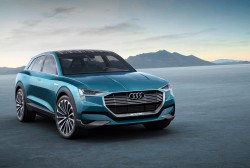
AUDI E-TRON QUATTRO CONCEPT: ELECTRIC DRIVING PLEASURE WITH NO COMPROMISES
- A foretaste of the production version: The electric-powered Audi e-tron quattro concept
- Range of more than 500 kilometers (310.7 mi) for full everyday usability
- New concept combines aerodynamics and creative design solutions
Flow-enhanced design with a drag coefficient of 0.25; a powerful, all-electric e-tron quattro drive with up to 370 kW – Audi is presenting the Audi e-tron quattro concept at the International Motor Show (IAA) 2015 in Frankfurt. The car is the company’s statement about the future of electric mobility: It is sporty, efficient and suitable for everyday use.
 “Audi will present an all-electric, luxury-class sport SUV in early 2018. The Audi e-tron quattro concept provides a concrete foretaste of this,” says Prof. Dr. Ulrich Hackenberg, Member of the Audi Board of Management for Technical Development. “It combines driving pleasure with great range, an expressive design and excellent comfort.”
“Audi will present an all-electric, luxury-class sport SUV in early 2018. The Audi e-tron quattro concept provides a concrete foretaste of this,” says Prof. Dr. Ulrich Hackenberg, Member of the Audi Board of Management for Technical Development. “It combines driving pleasure with great range, an expressive design and excellent comfort.”
Electric power
The Audi e-tron quattro concept uses the power of three electric motors: One electric motor drives the front axle, the two others act on the rear axle. Total output is 320 kW. The driver can even mobilize 370 kW and over 800 Nm (590.0 lb-ft) of torque temporarily while boosting. The concept study thus performs like a sports car. When the driver floors the right pedal, the Audi e-tron quattro concept sprints from a standstill to 100 km/h (62.1 mph) in 4.6 seconds and quickly reaches the electronically governed top speed of 210 km/h (130.5 mph).
The concept with three electric motors which Audi is presenting for the first time makes the technology study an e-tron quattro. An intelligent drive management system controls the interplay between them as appropriate for the situation. The focus here is on the greatest possible efficiency. The driver decides on the degree of recuperation, the driving program S or D and the mode of the Audi drive select system.
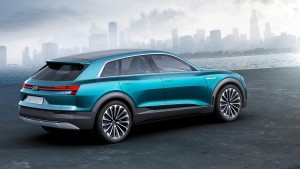 During sporty driving on a winding road, the Torque Control Manager actively distributes the power between the rear wheels as necessary. This torque vectoring provides for maximum dynamics and stability.
During sporty driving on a winding road, the Torque Control Manager actively distributes the power between the rear wheels as necessary. This torque vectoring provides for maximum dynamics and stability.
The large lithium-ion battery is integrated into the floor of the passenger compartment. It gives the Audi e-tron quattro concept a balanced axle load distribution and a low center of gravity – prerequisites for its dynamic handling. The battery’s capacity of 95 kWh enables a range of more than 500 kilometers (310.7 mi). The Combined Charging System (CCS) enables charging with DC or AC electrical current. A full charge with DC electrical current at a charging column with an output of 150 kW takes just around 50 minutes. As an alternative, the study is equipped with Audi Wireless Charging technology for contactless induction charging. The charging process is very convenient. The Audi e-tron quattro concept uses a system for piloted parking that guides it to the proper position at the charging plate. In addition, a large solar roof provides electricity for the drive system battery on sunny days.
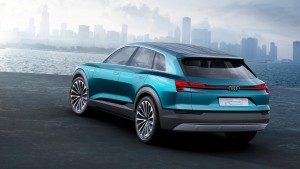 The chassis also expresses the high-tech character of the concept study. The adaptive air suspension sport, which features controlled damping, lowers the body at higher speeds to reduce drag. The dynamic-all-wheel steering combines a dynamic steering system on the front axle with a steering system for the rear wheels. Depending on speed and the driving situation, they steer either opposite or in the same direction as the front wheels. The Audi e-tron quattro concept thus reacts even more spontaneously and stably, and is also very manoeuvrable at low speeds.
The chassis also expresses the high-tech character of the concept study. The adaptive air suspension sport, which features controlled damping, lowers the body at higher speeds to reduce drag. The dynamic-all-wheel steering combines a dynamic steering system on the front axle with a steering system for the rear wheels. Depending on speed and the driving situation, they steer either opposite or in the same direction as the front wheels. The Audi e-tron quattro concept thus reacts even more spontaneously and stably, and is also very manoeuvrable at low speeds.
Aerodynamic: The exterior design
The Audi e-tron quattro concept harmoniously combines the design with the aerodynamics and all-electric drive system. The five-door technology study is 4.88 meters (16.0 ft) long, 1.93 meters (6.3 ft) wide and just 1.54 meters (5.1 ft) high. Its coupe-like silhouette with the extremely flat greenhouse that tapers strongly toward the rear lends it a very dynamic appearance. The car’s drag coefficient measures just 0.25 – a new best for the SUV segment, where figures are usually considerably over 0.30.
All of this contributes considerably to the long range of more than 500 kilometers (310.7 miles). At speeds from 80 km/h (49.7 mi), electrically actuated aerodynamic elements on the engine hood, the flanks and at the rear end direct the flow of air as needed to improve the flow through and around the vehicle. This is one example of the intensive development work in the wind tunnel. Wind noise is low on board the car, and there are no engine noises in an electric car in any case. The fascination of electric driving unfolds in near total silence.
The vertical separating edges on the side panels and the fully enclosed floor pan with its newly designed microstructures contribute to reducing drag. Cameras replace the exterior mirrors – another contribution to the excellent aerodynamics and also a foretaste of the future of driving.
All the main lighting functions at the front of the car use Matrix laser technology. The bottom section houses a new, distinctive lighting signature comprising five lighting elements. Each of these combines an LED luminary with an extremely flat OLED element (organic light-emitting diode). Audi is developing Matrix OLED technology for use in production vehicles and is showing it for the first time in the concept study at the IAA.
The rear lights also comprise two sections. Each of the top zones features nine red OLED units for the tail light function, with three more below.
Deep integration: The interior
The package of the Audi e-tron quattro concept enables a spacious, comfortable interior for four persons and 615 liters (21.7 cu ft) of luggage. The interior has a light and open feel to it; its architecture melds harmoniously with the operating and display concept. All displays in the interior use OLED technology. The extremely thin films can be cut to any desired shape.
The new Audi virtual cockpit curved OLED is a further development of the Audi virtual cockpit that debuted in production vehicles in 2014. To the left and right below the fully-digital instrument cluster are two touch displays with black glass and a subtle aluminum frame. The driver controls the lights and the systems for piloted driving with the left display. The large display on the right is for media and navigation management. The steering wheel serves as an alternate control level. Its spokes are equipped with contoured touch surfaces.
Below the selector lever on the center tunnel console are two more OLED displays for the drive system status, climate control and freely programmable information functions. The curved displays in the front section of the doors serve as digital exterior mirrors.
The two rear passengers sit on comfortable individual seats. They can use the OLED displays on the center console to configure the climate control and infotainment for their area or to exchange data with the driver. An LTE module connects the Audi e-tron quattro concept with the Internet. The connectivity features in the study are cutting edge.
The zFAS: Nerve center for piloted driving
The concept study is equipped with all the technologies that Audi has developed for piloted driving: radar sensors, a video camera, ultrasonic sensors and a laser scanner. The data these supply come together in the central driver assistance controller (zFAS) in the luggage compartment. It computes a complete model of the car’s surroundings in real time and makes this information available to all assistance systems and the systems for piloted driving. These technologies are also nearly ready for use in production vehicles.

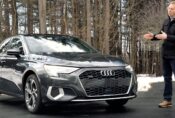 2022 AUDI A3 TEST DRIVE
2022 AUDI A3 TEST DRIVE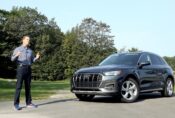 2021 AUDI Q5 TEST DRIVE
2021 AUDI Q5 TEST DRIVE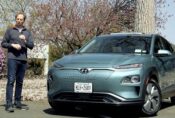 5 NEW ELECTRIC CARS ARRIVING
5 NEW ELECTRIC CARS ARRIVING